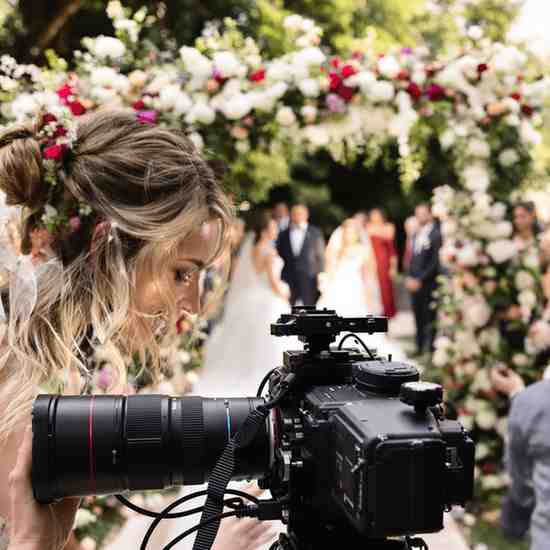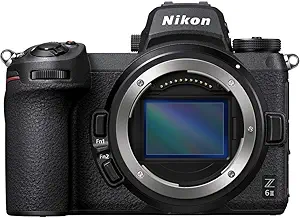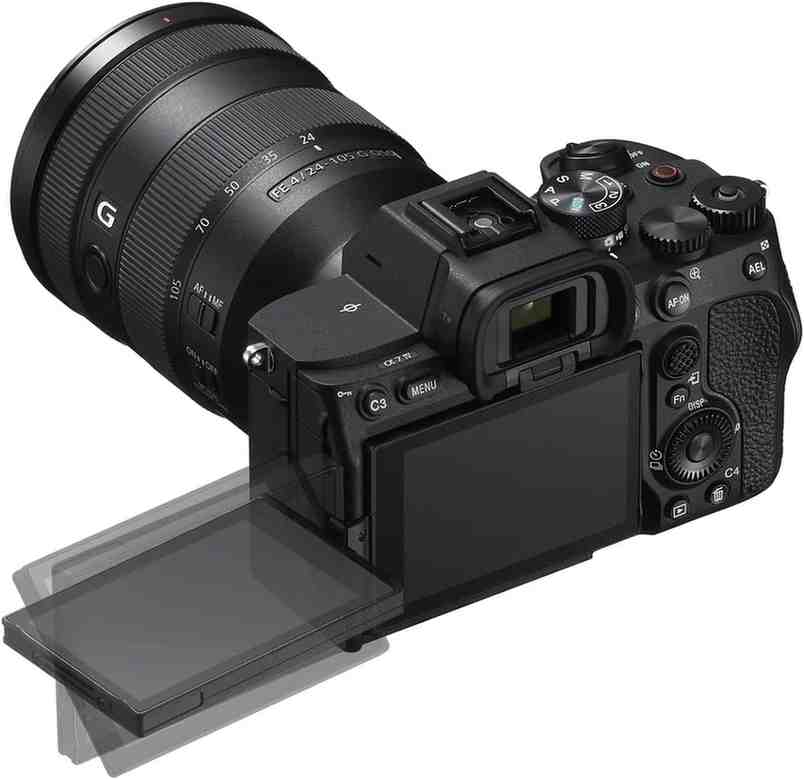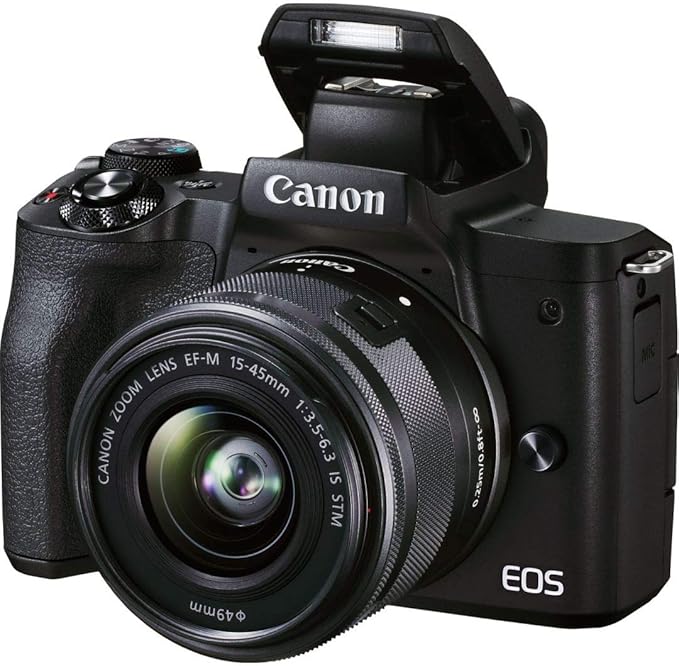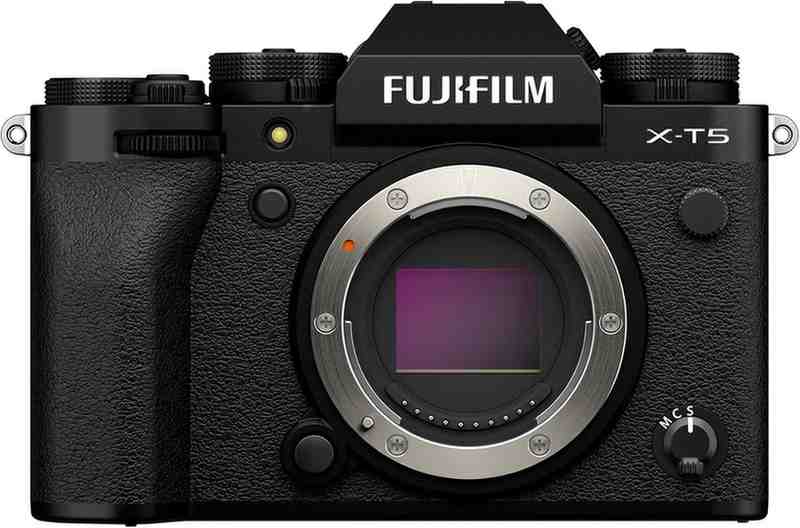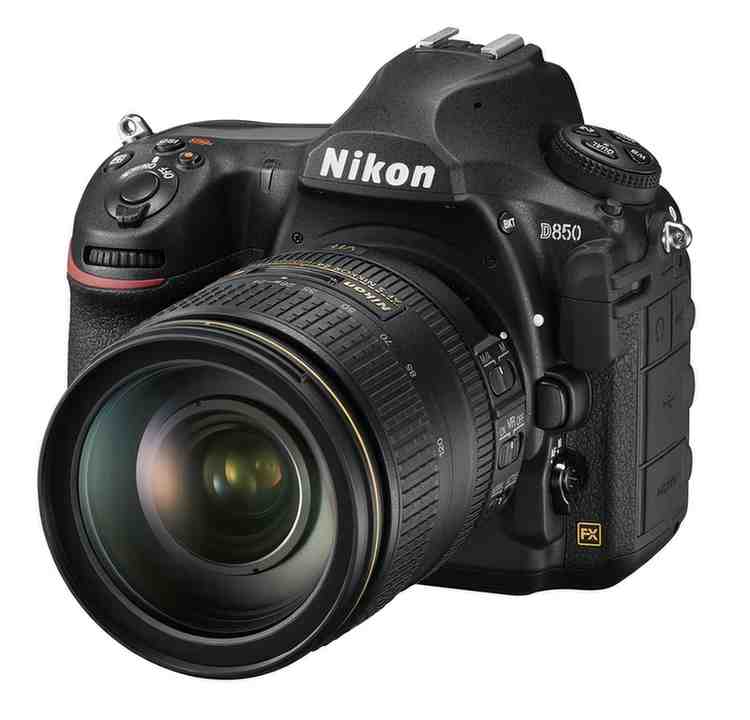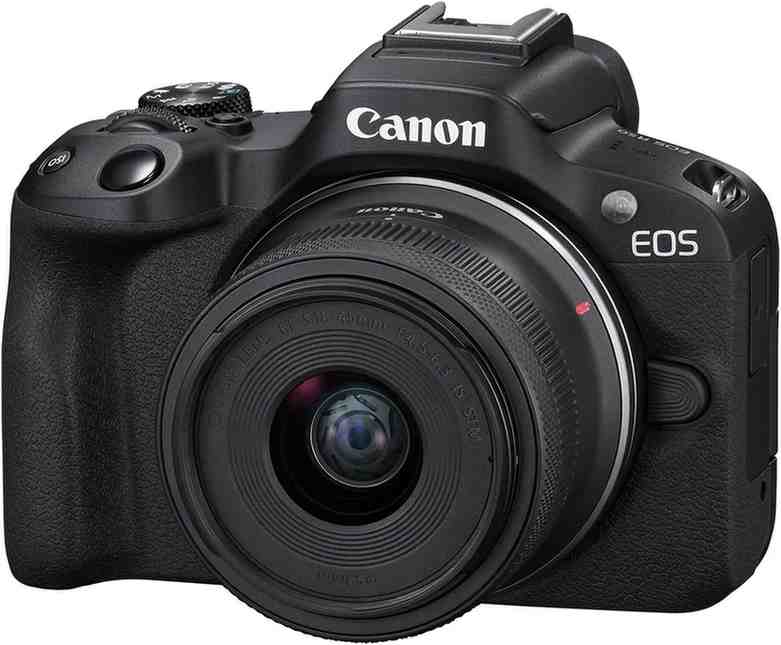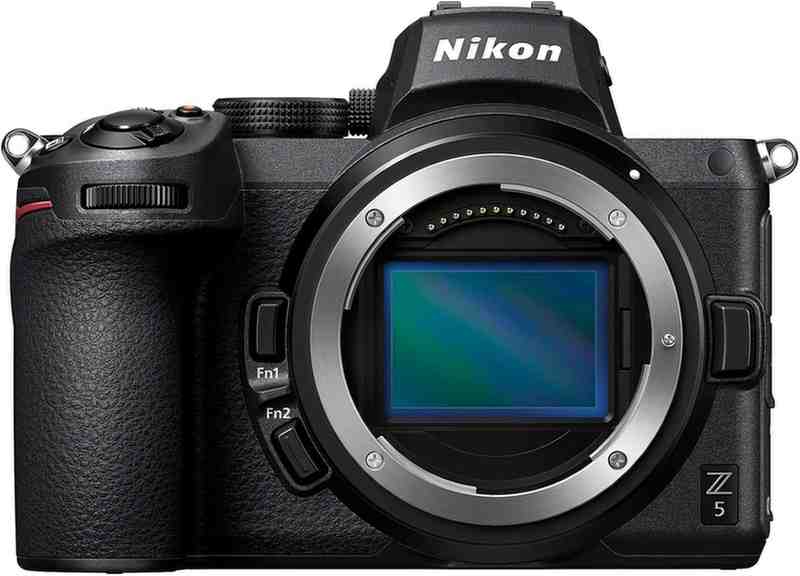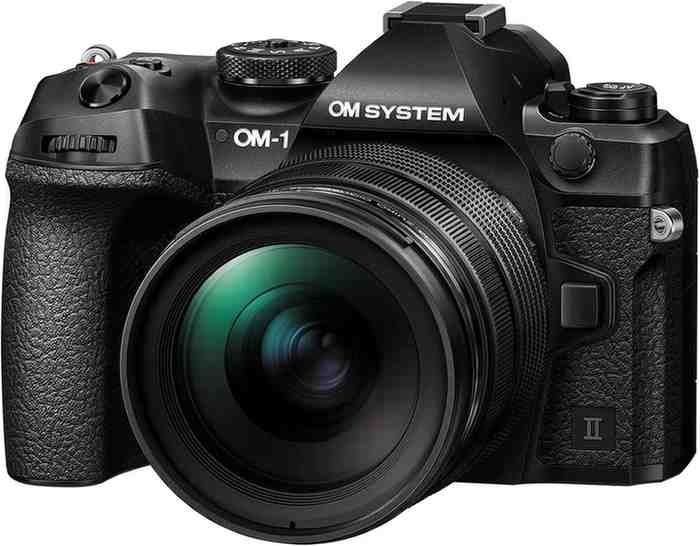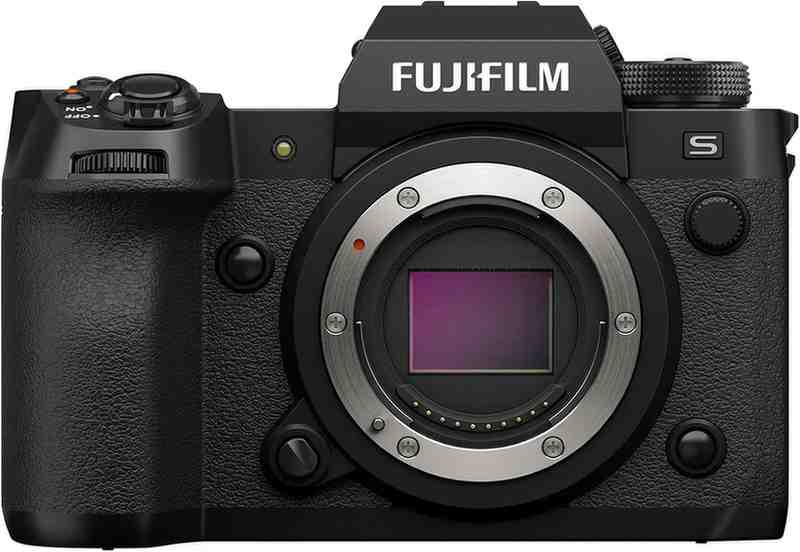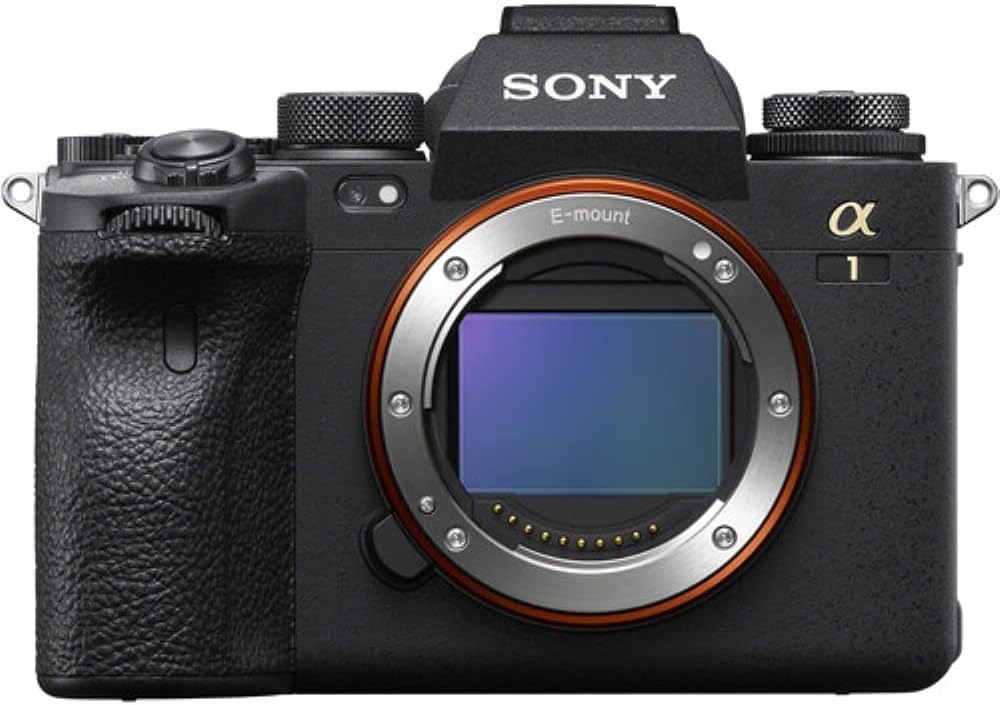Choosing the best cameras for wedding photography can greatly impact your ability to capture those unforgettable moments. Unlike casual photographers, wedding photographers face unique challenges—such as missing the perfect shot during important moments like the bride walking down the aisle or the first kiss.
The ongoing debate between DSLR and mirrorless cameras continues to evolve, with mirrorless systems mostly taking the lead in recent years. Canon, Nikon, Sony, and Fujifilm each have their own strengths and offer a wide range of lenses and accessories.
Wedding photography requires more from your equipment than almost any other type of photography. You’ll be shooting in dimly lit churches where using a flash may not be allowed, then transitioning to bright outdoor ceremonies, and finally capturing fast-paced dance floor action at night.
The best cameras for wedding photography should be versatile enough to handle all these different lighting conditions without any issues.
There are several key features that set apart a good camera for wedding photography from an average one:
- Autofocus performance: Look for cameras with eye detection and subject tracking capabilities to ensure sharp focus on your subjects even during unpredictable moments.
- Sensor size: Full-frame sensors perform better in low light situations, although modern APS-C cameras have made significant improvements in this area.
- Build quality: Weather sealing is important to protect your camera from unexpected rain during outdoor receptions.
- Dual card slots: Having redundant memory card slots is essential when you’re responsible for capturing someone’s wedding day.
- Video capabilities: Many couples now expect both photos and video coverage, so it’s beneficial to have a camera that can shoot high-quality video as well.
While the best lens for wedding photography is also crucial, remember that your camera body is the foundation of your entire system. This guide explores the top cameras trusted by professional wedding photographers when there’s no room for error.
Table of Contents
Key Features to Consider When Choosing the Best Cameras for Wedding Photography
Wedding photography requires equipment that works perfectly under pressure. You’re not just taking nice pictures—you’re capturing unique moments that can never be recreated. The technical details of your camera directly affect your ability to deliver amazing images in different shooting situations.
Sensor Size
Sensor size is crucial for image quality and low-light performance. Full-frame sensors are great at collecting light, producing cleaner images at higher ISO values compared to APS-C or Micro Four Thirds sensors.
When shooting in poorly lit churches or candlelit receptions, a larger sensor gives you the flexibility to increase ISO settings to 6400 or even 12800 while keeping noise levels acceptable. This ability isn’t just convenient—it’s essential when you can’t control the lighting.
Autofocus Performance
Autofocus performance sets apart amateur gear from professional tools. Modern cameras with advanced autofocus systems featuring eye detection and subject tracking allow you to get sharp focus on moving subjects—the bride walking down the aisle, the first dance, or children running around the reception.
Look for cameras offering at least 400+ autofocus points with reliable face and eye detection across the frame.
Dynamic Range
The dynamic range of your camera sensor determines how well it deals with scenes that have bright and dark areas.
Outdoor ceremonies often present tricky lighting situations: bright sunlight on the bride’s white dress while the groom stands in shadow.
Cameras with 14+ stops of dynamic range preserve detail in both highlights and shadows, giving you flexibility during post-processing.
Dual Card Slots
Dual card slots aren’t optional—they’re mandatory insurance. Recording simultaneously to two memory cards means you’ll never lose an entire wedding due to card failure.
I’ve seen photographers experience card corruption, and those without backup systems faced devastating consequences.
Battery Life
Battery life matters when you’re shooting 8-12 hour wedding days. Professional cameras should deliver 400+ shots per charge, but bring multiple spare batteries regardless. Running out of power during the ceremony isn’t an option.
Weather Sealing
Weather sealing protects your investment during outdoor weddings. Rain doesn’t always cooperate with wedding schedules, and weather-sealed bodies with proper gaskets around buttons and ports let you continue shooting in light rain without risking damage to your equipment.
Comparing Mirrorless vs DSLR Cameras for Wedding Photography
The debate between mirrorless and DSLR wedding cameras has shifted dramatically over the past few years. What once seemed like a niche technology has become the dominant force in professional wedding photography.
Understanding the practical differences between these systems will help you make an informed decision based on your shooting style and the demands of wedding work.
The Mirrorless Advantage
1. Weight and Portability
Carrying gear through a 10-hour wedding day takes a physical toll. Full-frame mirrorless wedding cameras typically weigh 20-30% less than their DSLR counterparts.
When you factor in multiple camera bodies, lenses, and accessories, this difference becomes significant. I’ve noticed less shoulder strain and more energy for creative shots during evening receptions since switching to a lighter mirrorless setup.
2. Silent Operation
The mechanical shutter in DSLRs creates an audible click that can disrupt intimate moments. Mirrorless cameras offer electronic shutter modes that operate in complete silence. This proves invaluable during:
- Ceremony vows and ring exchanges
- First looks and emotional reveals
- Quiet moments during speeches
- Church ceremonies where noise restrictions apply
3. Electronic Viewfinder Benefits
Unlike optical viewfinders in DSLRs, electronic viewfinders show you exactly what your final image will look like before you press the shutter.
You see exposure adjustments, white balance changes, and depth of field in real-time. This eliminates guesswork in challenging lighting situations, particularly during dimly lit receptions or outdoor ceremonies at sunset.
4. Advanced Autofocus Systems
Modern mirrorless cameras use on-sensor phase detection across nearly the entire frame. Eye-tracking autofocus has become remarkably accurate, maintaining sharp focus on the bride’s eyes even when she’s moving through a crowd.
The autofocus systems in cameras like the Canon EOS R6 Mark II and Sony α7 IV work down to -6 EV, meaning they can focus in near-darkness.
The DSLRs Advantage
DSLR wedding cameras haven’t become obsolete overnight. Professional photographers continue using them successfully for several reasons.
1. Battery Life
DSLRs consume less power because they don’t require constant electronic display. A single DSLR battery might last an entire wedding day, while mirrorless cameras typically need 2-3 batteries for the same coverage.
This matters less if you invest in battery grips and maintain proper backups and redundancy systems.
2. Lens Ecosystem
Decades of lens development mean DSLRs have access to extensive used lens markets. You’ll find weather sealed cameras for weddings with compatible lenses at various price points, including best cameras under $2000 for weddings when buying used DSLR systems.
3. Optical Viewfinder Reliability
Optical viewfinders never lag, never drain batteries, and work regardless of electronic failures. Some photographers prefer the direct, unprocessed view of reality, especially when tracking fast-moving subjects during bouquet tosses or dance floor action.
4. Proven Reliability
Bodies like the Nikon D850 have earned reputations through years of professional use. Many wedding photographers maintain DSLR backups even after adopting mirrorless systems, ensuring redundancy if their primary camera fails.
Why Professionals Are Making The Switch
The wedding photography industry shows a clear trend toward mirrorless adoption. Camera manufacturers now prioritize mirrorless development, releasing cutting-edge features in these systems first. Sony, Canon, and Nikon have all shifted their flagship innovations to mirrorless lines.
Hybrid shooting capabilities drive much of this transition. Modern couples expect both photos and video coverage. Mirrorless cameras excel at video with features like in-body stabilization, silent autofocus motors, and superior heat management during extended recording sessions.
The Case For Sticking With DSLRs
Experienced DSLR users often resist switching due to their investment in lenses and accessories. A professional might own $15,000-30,000 in DSLR glass that works flawlessly with their current bodies. Adapters can bridge systems, but they add bulk and sometimes compromise autofocus speed.
Top 10 Best Cameras for Wedding Photography in 2025/2026 – Detailed Reviews
Choosing the best camera for wedding photography 2025/2026 requires careful consideration of your shooting style, budget, and the specific demands of wedding work.
After testing numerous bodies across different brands and price points, I’ve compiled this list of wedding cameras that consistently deliver professional results when it matters most.
1. Nikon Z6 II – Best Overall Full-Frame Mirrorless Camera
Check Latest Price on Amazon →
The Nikon Z6 II stands out as the best mirrorless camera for wedding photography for professionals who need reliability without compromise. This full-frame powerhouse strikes an ideal balance between performance, ergonomics, and value that’s hard to beat in the current market.
Autofocus Performance That Never Misses
The Z6 II’s 273-point hybrid autofocus system with eye detection transforms how you capture fleeting moments during ceremonies. I’ve shot countless first kisses and emotional reactions where the camera locked onto subjects instantly, even when they turned their heads or moved unpredictably.
The eye detection works brilliantly in both photo and video modes, tracking subjects across the frame with remarkable tenacity.
Real-time subject tracking proves invaluable during reception dances and processionals. The camera maintains focus on the bride’s face as she walks down the aisle, even with guests occasionally crossing into the frame.
This level of autofocus reliability means you spend less time worrying about technical settings and more time anticipating decisive moments.
Best Low Light Performance for Challenging Venues
Wedding photographers frequently encounter low-light only venues—dimly lit churches, candlelit receptions, and evening outdoor ceremonies. The Z6 II’s 24.5MP full-frame sensor excels in these conditions, producing clean images at ISO 6400 and usable results even at ISO 12800.
I’ve pushed this camera to ISO 25600 during a particularly dark church ceremony and still delivered printable images to clients.
The sensor’s native ISO range of 100-51200 (expandable to 204800) gives you flexibility when ambient light disappears. Paired with fast f/1.4 or f/1.8 primes, you can shoot handheld in virtually any lighting condition without resorting to intrusive flash photography that disrupts the ceremony’s atmosphere.
Dual Card Slots: Non-Negotiable Peace of Mind
Professional wedding work demands redundancy. The Z6 II features dual card slots (one CFexpress/XQD and one UHS-II SD), allowing simultaneous backup recording. I configure mine to write RAW files to both cards—if one card fails, I haven’t lost irreplaceable moments from someone’s wedding day.
This redundancy separates professional-grade bodies from enthusiast models. You’re not just protecting your reputation; you’re safeguarding memories that can never be recreated. The best camera for wedding photography must include this feature, and the Z6 II delivers it alongside flagship-level performance.
Weather Sealing and Build Quality
The Z6 II’s magnesium alloy body with extensive weather sealing handles unpredictable outdoor conditions without hesitation.
I’ve shot beach weddings in light rain, dusty barn receptions, and humid summer ceremonies where the camera performed flawlessly. The sealed body protects against moisture and dust intrusion at every button, dial, and port.
2. Sony α7 IV – Best Hybrid Photo+Video Wedding Camera
The Sony α7 IV stands out as the ultimate choice for photographers tackling hybrid video and photo wedding coverage. This camera bridges the gap between traditional wedding photography and the growing demand for cinematic video content, making it one of the best cameras under $2,500 for weddings in 2025/2026.
Key Features of Sony α7 IV
- 33MP Resolution: Delivers stunning detail in both stills and video frames.
- High ISO Performance: Handles low-light situations beautifully with minimal noise degradation.
- Dynamic Range: Captures a wide range of tones, preserving details in both bright and dark areas.
- 4K Video Recording: Produces smooth, professional footage perfect for capturing key moments.
- 10-bit Color Sampling: Provides flexibility in post-production color grading.
- Real-time Eye Autofocus: Locks onto subjects with precision, even during movement.
- Weather Sealing: Protects against light rain and dust, ensuring durability in outdoor settings.
- Dual Card Slots: Offers redundancy for important files, a must-have for professional work.
Why Choose Sony α7 IV?
- Versatility: Combines the best features of a photo and video camera, making it ideal for weddings where both mediums are desired.
- Future-proofing: With its advanced video capabilities and high resolution, this camera is equipped to handle evolving industry standards.
- Lens Compatibility: The extensive selection of native E-mount lenses provides flexibility in choosing the right optics for different shooting scenarios.
Whether you’re an established wedding photographer looking to expand your offerings or a newcomer seeking a reliable all-in-one solution, the Sony α7 IV is an excellent investment that will serve you well on countless special days.
3. Canon EOS R6 Mark II – Best Canon Mirrorless Camera For Weddings
Check Latest Price on Amazon →
Canon shooters searching for the best Canon mirrorless camera for wedding photography will find their ideal match in the EOS R6 Mark II.
This camera embodies Canon’s dedication to professional wedding work, merging cutting-edge technology with the reliability that has made Canon a trusted name among wedding photographers for decades.
Key Features:
- In-body image stabilization: Rated at up to 8 stops of compensation when paired with compatible RF lenses, this stabilization becomes a lifesaver during dimly lit church ceremonies and candlelit receptions.
- Autofocus performance: Covers nearly 100% of the frame with 1,053 selectable AF points, meaning you can track subjects even when they’re positioned at the extreme edges of your composition.
- Low-light performance: Maintains clean files at ISO 6400 and produces usable images even at ISO 12,800 during reception dancing when venue lighting drops to mood-setting levels.
- Dynamic range: Captures detail in both the bride’s white dress and the groom’s black tuxedo simultaneously, even in challenging lighting scenarios common at low-light only venues.
- Weather sealing: Protects your investment during outdoor ceremonies where weather can turn unpredictable.
- Dual card slots: Provides the redundancy professional wedding work demands.
Why It Stands Out
The R6 Mark II’s in-body image stabilization system stands out as one of its most valuable features for wedding work. I’ve shot entire ceremonies handheld at shutter speeds I wouldn’t have dared attempt with older bodies, pulling off sharp images at 1/15th of a second while guests moved around me.
The system works seamlessly with Canon’s IS-equipped lenses, providing even more stability when you need it most.
Autofocus performance on this body rivals anything in its class. The eye detection locks onto subjects with remarkable tenacity—I’ve tracked brides walking down aisles, couples during their first dance, and flower girls running through crowds without missing focus.
The system recognizes and tracks people, animals, and vehicles, adapting intelligently to whatever enters your frame.
Low-light performance reaches impressive heights thanks to the 24.2MP full-frame sensor and native ISO range extending from 100 to 102,400 (expandable to 204,800).
During reception dancing when venue lighting drops to mood-setting levels, the R6 Mark II maintains clean files at ISO 6400 and produces usable images even at ISO 12,800.
The dynamic range captures detail in both the bride’s white dress and the groom’s black tuxedo simultaneously, even in challenging lighting scenarios common at low-light only venues.
The weather sealing protects your investment during outdoor ceremonies where weather can turn unpredictable. Rain, dust, and humidity won’t stop you from capturing those once-in-a-lifetime moments.
The magnesium alloy body feels substantial without being burdensome—at approximately 670g (body only), you can shoot all day without the fatigue that heavier professional bodies sometimes cause.
Lens Compatibility
Canon’s RF lens ecosystem gives you access to some of the best Canon lenses for weddings. The RF 28-70mm f/2 provides constant f/2 aperture across its zoom range—perfect for ceremony coverage. The RF 50mm f/1.2L and RF 85mm f/1.2L deliver stunning portrait quality for couple shots,
4. Fujifilm X-T5 – Best APS-C Mirrorless Option For Lightweight Wedding Shoots
Check Latest Price on Amazon →
The Fujifilm X-T5 stands out as the best camera for wedding photography in the APS-C category, proving that sensor size doesn’t always dictate image quality.
This mirrorless powerhouse packs a remarkable 40-megapixel sensor into a compact body that weighs just 557 grams—nearly half the weight of many full-frame competitors. I’ve tested this camera at multiple weddings, and the difference in fatigue levels after an 8-hour shoot is genuinely noticeable.
Image Quality That Punches Above Its Weight Class
The X-T5’s 40MP sensor delivers stunning resolution that rivals full-frame bodies in many scenarios. When shooting wedding details like rings, dress embroidery, or floral arrangements, the level of detail captured is exceptional.
The camera’s color science—something Fujifilm is renowned for—produces skin tones that require minimal post-processing. This becomes invaluable when you’re editing hundreds of images from a single wedding day.
In low-light venues, the X-T5 performs admirably despite its APS-C sensor. While it doesn’t match the ISO performance of full-frame options like the Nikon Z6 II or Sony α7 IV, it handles reception lighting and dimly lit churches better than you’d expect.
I’ve comfortably shot at ISO 6400 without excessive noise, though I’d recommend pairing it with fast glass like the XF 56mm f/1.2 for low-light only venues.
Handling and Ergonomics for All-Day Shooting
The compact size makes the X-T5 an excellent second body wedding photographer choice. You can easily carry two X-T5 bodies with different lenses throughout the ceremony without feeling weighed down.
The retro-styled dials provide quick access to exposure settings, and the tilting LCD screen helps capture creative angles during first dances or bouquet tosses.
Weather sealing protects against unexpected rain during outdoor ceremonies—a feature that saved me during a particularly unpredictable spring wedding.
The build quality feels solid despite the lighter weight, instilling confidence when shooting in varied environments.
Autofocus Performance and Stabilization
Autofocus performance on the X-T5 impresses with its subject-detection capabilities. The eye-detection works reliably for both photo and video, tracking the bride and groom through crowded receptions.
The 6.5-stop in-body image stabilization compensates for camera shake when shooting handheld in challenging lighting conditions, allowing slower shutter speeds without blur.
The burst rate of 15fps with mechanical shutter (20fps electronic) captures fast-moving moments like confetti throws or dancing guests. The buffer handles extended shooting sessions well, though not quite matching the Canon EOS R6 Mark II’s capacity.
For photographers seeking the best mirrorless camera for wedding photography without the bulk and expense of full-frame systems, the X-T5 represents an intelligent compromise. It’s particularly appealing if you’re building a lightweight kit or transitioning from DSLR systems.
5. Nikon D850 – Best DSLR For High Resolution Wedding Photography
Check Latest Price on Amazon →
The Nikon D850 is a prime example of why DSLRs are still relevant in professional wedding photography. This powerful camera features an impressive 45.7-megapixel full-frame sensor that captures stunning detail in every shot.
Whether you’re photographing a bride’s intricate lace dress or need the flexibility to crop into a group photo without sacrificing quality, this high resolution is invaluable.
Why Resolution Matters for Wedding Photographers
That 45.7MP sensor isn’t just for show. It gives you the ability to deliver large prints that clients often request for their homes or albums. I’ve cropped images from the D850 by 50% and still had enough resolution for a 16×20 print.
This flexibility saves shots that might otherwise be unusable due to composition issues during fast-paced moments.
The optical viewfinder remains a significant advantage for photographers who’ve spent years with DSLRs. Unlike electronic viewfinders that can lag or drain battery life, the D850’s optical system shows you exactly what the lens sees with zero delay.
During critical moments—like the exchange of rings or the first kiss—this direct connection to the scene helps you nail timing perfectly.
Built Like a Tank for Demanding Wedding Days
Wedding photography equipment goes through a lot of wear and tear. The D850’s weather sealing and sturdy build quality can handle outdoor ceremonies in light rain, dusty barn venues, and everything in between.
The magnesium alloy body feels solid in your hands, giving you confidence when you’re moving through crowds or working in challenging environments.
The camera’s autofocus performance features 153 focus points with 99 cross-type sensors, covering a wide area of the frame. This autofocus system locks onto subjects quickly, even in low-light venues where many cameras struggle.
The D850 performs admirably at high ISO settings, maintaining clean images up to ISO 3200 and producing usable shots at ISO 6400—essential for dimly lit receptions or church interiors.
Battery Life That Lasts All Day
One practical advantage of DSLR technology: battery life that mirrorless cameras can’t match. The D850 delivers approximately 1,840 shots per charge, meaning you’ll rarely need to swap batteries during a typical wedding day.
This reliability matters when you’re moving between ceremony and reception venues without time to recharge.
The camera’s weight (approximately 2.2 pounds body-only) positions it as a substantial piece of equipment. Some photographers appreciate this heft for stability when shooting with telephoto lenses, while others prefer lighter mirrorless options for all-day comfort.
Your preference depends on shooting style and physical considerations during long wedding days.
Dual Card Slots for Peace of Mind
Professional wedding photographers know the importance of backup. The D850 features dual card slots (XQD/CFexpress and SD), allowing you to write files simultaneously to both cards.
This redundancy protects against card failure—a wedding photographer’s worst nightmare.
For those seeking the best camera for professional wedding photography with maximum resolution and proven DSLR reliability, the D850 remains a top choice in 2025/2026.
Its camera resale value stays strong among wedding photographers who appreciate its durability and image quality.
6. Canon EOS R5 – Professional Grade Mirrorless With Advanced Features
Check Latest Price on Amazon →
The Canon EOS R5 is a top choice for wedding photographers who want the best photo and video quality. This professional mirrorless camera has an impressive 45-megapixel full-frame sensor that captures every detail, from the delicate lace on a wedding dress to the heartfelt expressions during vows.
Key Features of Canon EOS R5
- Autofocus Performance That Doesn’t Miss a Beat: The R5’s Dual Pixel CMOS AF II system ensures precise subject tracking, even in unpredictable moments like the first dance or group portraits.
- Dual Card Slots: Your Safety Net: With dual card slots (one CFexpress, one SD UHS-II), you can record images simultaneously to both cards, providing backup in case of card failure.
- Weather Sealing for Unpredictable Conditions: The R5’s weather sealing protects against dust and moisture, allowing you to shoot confidently in light rain or humid environments.
- 8K Video Capabilities: Hybrid shooters will appreciate the R5’s ability to record 8K video at 30fps, offering flexibility for cropping and reframing in post-production.
- High ISO Performance: The R5 handles low-light situations well, with ISO ranges up to 51,200 (expandable to 102,400) and minimal noise control.
The Canon EOS R5 represents a significant investment, but its combination of resolution, speed, and reliability makes it one of the best cameras for wedding photography in 2025.
Access to Canon’s extensive RF lens ecosystem—including fast primes like the RF 50mm f/1.2 and versatile zooms like the RF 24-70mm f/2.8—further enhances this camera’s appeal for professional wedding work.
7. Nikon Z5 – Best Budget-Friendly Full Frame Mirrorless Camera For Weddings
Check Latest Price on Amazon →
You don’t have to spend a fortune to get into full-frame wedding photography. The Nikon Z5 shows that you can have both affordable pricing and professional image quality, making it a great choice for photographers starting their wedding business or looking for a reliable backup camera.
Full-Frame Performance Without the Premium Price Tag
At its price point, the Z5 delivers image quality that punches well above its weight class. The 24.3MP full-frame sensor captures beautiful, detailed images with excellent dynamic range—essential when you’re working with the challenging lighting conditions typical at wedding venues.
I’ve found the sensor particularly impressive when shooting in low-light only venues like dimly lit churches or evening receptions, where the full-frame advantage becomes immediately apparent.
The camera handles ISO performance admirably, producing clean images up to ISO 6400 and usable results even at higher settings.
While it may not match the extreme high-ISO capabilities of cameras costing twice as much, it’s more than sufficient for the vast majority of wedding scenarios you’ll encounter.
Practical Features That Matter on Wedding Day
The Z5’s weather sealing stands out as a feature rarely found in budget-oriented cameras. This protection against dust and moisture means you can confidently shoot outdoor ceremonies, beach weddings, or destination weddings without constantly worrying about unexpected weather changes.
The robust build quality feels reassuring in hand, with a weight that strikes a nice balance—substantial enough to feel professional yet light enough to carry through a 10-hour wedding day.
Dual card slots provide the redundancy that wedding photographers absolutely need. When you’re capturing once-in-a-lifetime moments, having that backup recording simultaneously gives you peace of mind that no other feature can match.
Autofocus Performance and Real-World Application
The autofocus system, while not as lightning-fast as the Nikon Z6 II or Z8, performs reliably in controlled environments. For micro-weddings, intimate ceremonies, or destination weddings where you have more time to compose shots, the AF system handles the job beautifully.
The eye-detection autofocus locks onto subjects accurately, though it may occasionally hunt in extremely low light situations.
This camera shines brightest when shooting staged portraits, couple sessions, and detail shots where you have a moment to work deliberately.
It’s also an excellent best backup camera for weddings when paired with a higher-end body—you’ll appreciate having matching files from the same sensor size.
Who Should Consider the Z5?
Photographers shooting their first few weddings will find the Z5 an ideal stepping stone into professional work. It’s equally valuable as a best camera for destination weddings where you want to travel light without sacrificing full-frame quality.
The combination of weather sealing, dual card slots, and solid image quality at an accessible price makes it one of the best cameras under $1500 for weddings in 2025/2026.
The Z5 proves you don’t need the most expensive gear to deliver stunning wedding photos—you just need the right tool for your specific shooting style and budget.
8. OM System OM-1 Mark II – Best Compact Camera For Fast Action Weddings
Check Latest Price on Amazon →
The OM System OM-1 Mark II brings something different to wedding photography—a Micro Four Thirds sensor packed into a body that weighs significantly less than traditional full-frame options.
I’ve watched wedding photographers struggle with heavy gear during 12-hour shoots, and this camera addresses that pain point without compromising on professional features.
Burst Rate That Captures Every Fleeting Moment
When the bride tosses her bouquet or guests break into spontaneous dance floor celebrations, you need a camera that fires rapidly and doesn’t choke on its buffer. The OM-1 Mark II delivers an impressive 120 fps burst rate with electronic shutter, though the more practical 50 fps mode still outpaces most competitors.
This speed proves invaluable during unpredictable moments—the father-daughter dance, the cake cutting, or that split-second expression when the couple sees each other for the first time.
The buffer capacity handles extended shooting sequences without lag, which matters when you’re tracking movement across a crowded reception hall. Unlike some cameras under $2,500 that struggle after a few seconds of continuous shooting, this body maintains its pace.
Autofocus Performance Built for Chaos
Wedding ceremonies rarely unfold in controlled environments. Guests move, lighting shifts, and your subjects don’t always cooperate with your focus points. The OM-1 Mark II’s autofocus system uses AI-powered subject detection that locks onto faces and eyes with remarkable tenacity.
I’ve read reviews from wedding photographers who specifically praise its ability to maintain focus on moving subjects in low-light only venues—churches with dim ambient lighting or reception halls lit primarily by candles and string lights.
The camera’s eye detection works across a wide ISO range, staying reliable even when you’re shooting at ISO 6400 or higher.
While the smaller Micro Four Thirds sensor doesn’t match full-frame low light performance in absolute terms, the advanced autofocus compensates by ensuring your shots stay sharp when it counts.
Weather Sealing That Protects Your Investment
Outdoor weddings don’t come with weather guarantees. The OM-1 Mark II features comprehensive weather sealing rated for dust, splash, and freeze resistance down to -10°C. This protection level matches what you’d find on professional bodies from Canon, Nikon, or Panasonic, but in a package that weighs just 599 grams.
The Weight Advantage
After shooting back-to-back weddings, your shoulders and neck will thank you for choosing lighter gear. The compact design doesn’t just reduce fatigue—it makes you less conspicuous during intimate ceremony moments.
You can move quickly between the cocktail hour and reception without feeling weighed down by equipment.
The smaller form factor also makes this an excellent wedding photographer camera backup system. Many professionals carry two bodies, and pairing the OM-1 Mark II with a full-frame primary camera gives you versatility without doubling your load.
9. Fujifilm X-H2S – Best APS-C Mirrorless For Fast Shooting And Video Hybrid Use
Check Latest Price on Amazon →
The Fujifilm X-H2S stands out as a powerhouse hybrid camera that bridges the gap between professional photography and videography needs at weddings.
This APS-C mirrorless camera delivers performance that punches well above its sensor size, making it an exceptional choice for photographers who need versatility without the bulk of full-frame systems.
Blazing Fast Continuous Shooting
Speed defines the X-H2S. With continuous shooting rates reaching up to 40 frames per second with the electronic shutter, you’ll never miss those split-second moments that make wedding photography magical.
That tearful glance between the couple during vows, the explosive joy of the first kiss, or the spontaneous laughter during speeches—the X-H2S captures them all.
The mechanical shutter still delivers an impressive 15fps, giving you options depending on your shooting scenario. This burst rate capability rivals many full-frame competitors and positions the X-H2S as one of the best cameras under $3000 for weddings when speed matters most.
The buffer capacity handles extended shooting sessions without choking, which I’ve found invaluable during processional walks or when guests throw confetti. You can fire away confidently, knowing the camera won’t slow you down during critical moments.
Autofocus Performance That Delivers
Fujifilm’s latest autofocus system in the X-H2S represents a significant leap forward. The AI-powered subject detection locks onto faces and eyes with remarkable tenacity, even in challenging low-light only venues where many cameras struggle.
The system tracks subjects across the frame smoothly, maintaining focus as the couple moves through dimly lit church aisles or dances under colored reception lighting.
The autofocus works seamlessly in both photo and video modes, making transitions between shooting styles effortless.
When you’re documenting a wedding ceremony where lighting conditions shift from bright windows to shadowed pews, the X-H2S adapts quickly without hunting.
Hybrid Photo Video Camera Excellence
Video capabilities elevate the X-H2S beyond typical wedding photography cameras. It records 6.2K video at 30fps and 4K at 120fps, providing flexibility for both standard coverage and dramatic slow-motion sequences.
Many wedding photographers now offer video packages alongside stills, and this camera handles both roles without compromise.
The 10-bit internal recording captures rich color information, essential when you’re working with varied lighting scenarios—from warm candlelight during dinner to cool LED uplighting on dance floors.
The video autofocus maintains the same reliability as photo mode, tracking subjects smoothly without the jarring focus shifts that ruin footage.
In-Body Stabilization And Weather Sealing
The 5-axis in-body image stabilization compensates for up to 7 stops of camera shake, a game-changer when shooting handheld in low-light venues without flash. You can confidently shoot at slower shutter speeds during ambient-light-only ceremonies or receptions, maintaining image sharpness that would be impossible without stabilization.
Weather sealing protects against the unpredictable elements of outdoor weddings. Light rain during garden ceremonies or dusty barn venues won’t compromise your gear. The magnesium alloy body feels solid and professional, inspiring confidence during long shooting days.
Weight And Ergonomics
At approximately 660 grams (body only), the X-H2S offers a comfortable middle ground between lightweight portability and substantial professional feel. The weight distribution works well with Fuji’s larger lenses like the XF 50mm f/1 or XF 16-55mm f/2.8, ensuring balanced handling during extended shoots.
The grip design is ergonomic and comfortable even after hours of use—a crucial factor when you’re on your feet all day capturing moments at weddings.
10. Sony Alpha A1 – Ultimate High-End Hybrid Wedding Camera
Check Latest Price on Amazon →
The Sony Alpha A1 is the ultimate camera for wedding photography, combining top-of-the-line features that make it the best camera for wedding photography 2025/2026 if you’re willing to spend on the best equipment.
This powerhouse offers a stunning 50MP resolution and lightning-fast 30fps continuous shooting, a combination that’s hard to find in other mirrorless cameras.
Unmatched Resolution and Speed
The 50-megapixel sensor produces images with extraordinary detail, allowing you to crop aggressively while maintaining print-quality resolution—invaluable when you need to reframe a shot from a ceremony where repositioning wasn’t possible.
That same sensor works in harmony with the camera’s processing engine to deliver 30fps burst shooting with full autofocus and auto-exposure tracking. I’ve captured entire sequences of bouquet tosses and first kisses with frame-by-frame precision that ensures you never miss the decisive moment.
Autofocus Performance in Challenging Conditions
The Eye AF system on the Alpha A1 operates flawlessly even in the low-light only venues that plague many wedding photographers. Whether you’re shooting in a dimly lit church or a reception hall with mixed lighting, the autofocus locks onto subjects with remarkable reliability.
The camera’s ability to maintain focus on moving subjects—like a couple walking down the aisle or dancers during the reception—sets it apart from competitors. Real-time tracking works across the entire frame, adapting to high contrast venues where bright windows and dark interiors create exposure challenges.
Video Capabilities for Hybrid Shooters
8K video recording makes the Alpha A1 an exceptional choice for photographers who also handle videography duties. The video quality rivals dedicated cinema cameras, with excellent dynamic range and color science that matches your still photography workflow.
Weather sealing throughout the body protects your investment during outdoor ceremonies, while the robust build quality inspires confidence during long shooting days.
Professional Build and Ecosystem
The camera’s weight distribution feels balanced even with larger telephoto lenses attached, reducing fatigue during 10-hour wedding days.
Sony’s extensive E-mount lens ecosystem provides access to exceptional glass from both Sony and third-party manufacturers like Sigma and Tamron. The dual card slot configuration supports CFexpress Type A and SD cards, giving you flexible backup options.
ISO performance extends cleanly to 32,000, with usable images possible at even higher settings—critical for capturing candid moments during low-light receptions without intrusive flash. The electronic viewfinder refreshes at 240fps, providing a clear view even when tracking fast-moving subjects.
Essential Lenses For Wedding Photography – My Recommendations
The camera body vs lens debate matters more than most photographers realize. I’ve seen shooters invest thousands in a flagship body only to pair it with mediocre glass, wondering why their images lack that professional polish.
The truth? A $2,000 lens on a $1,500 body will outperform a $3,000 body with a $500 lens every single time.
Prime Lenses
Prime lenses deliver unmatched sharpness and bokeh quality that zooms simply can’t replicate. The Canon RF 35mm f/1.4 stands out as one of the best lenses for wedding photography 2025, offering incredible low-light performance and edge-to-edge sharpness that makes ceremony close-ups sing.
On the Nikon side, the Nikkor Z 58mm f/0.95 S Noct represents the absolute pinnacle of optical engineering—though its $8,000 price tag puts it firmly in the luxury category.
For budget-conscious shooters, the Canon EF 50mm f/1.8 STM remains the best budget lens for wedding photography Canon users can buy.
At under $150, it punches way above its weight class, delivering creamy bokeh and sharp portraits that clients love. Nikon shooters should look at the Nikkor Z 50mm f/1.8 S, which offers similar value with modern autofocus performance.
The 85mm focal length deserves special mention for wedding photography lenses. This range creates flattering compression for portraits while providing enough working distance to avoid making subjects uncomfortable.
I reach for an 85mm prime during couple portraits and detail shots more than any other lens in my kit.
Zoom Lenses
Wedding days move fast. You can’t always swap lenses when the bride starts walking down the aisle or when the first dance begins. This reality makes the 70-200mm f/2.8 range absolutely essential—it’s the workhorse that lives on my second body throughout every wedding.
Multiple manufacturers produce excellent versions of this focal range:
- Nikon Z 70-200mm f/2.8 VR S – Outstanding sharpness and stabilization
- Sony FE 70-200mm f/2.8 GM OSS II – Lighter than competitors without sacrificing quality
- Tamron 70-180mm f/2.8 Di III VXD – Best value option for Sony shooters
- Sigma 70-200mm f/2.8 DG OS HSM Sports – Excellent DSLR option at competitive pricing
These telephoto zooms let you capture candid moments from across the venue without disrupting the flow of events. Guests forget you’re there when you’re shooting from 30 feet away with a 200mm lens.
The 24-70mm f/2.8 represents the other must-have zoom for wedding photography. It covers everything from environmental portraits to detail shots, making it perfect for getting ready photos and reception coverage.
Budget wedding photography kit builders should prioritize this focal range—even if it means buying a third-party option like the Tamron 28-75mm f/2.8 Di III VXD G2.
Wide-Angle Lenses
Venue shots sell albums. Couples want to remember not just their faces but the beautiful spaces they chose for their celebration. Wide-angle lenses in the 16
Practical Tips For Using Your Wedding Photography Gear Effectively
Owning the right camera settings for wedding photography means nothing if you don’t know how to adapt them to real-world scenarios. Wedding environments shift dramatically—from dimly lit church interiors to bright outdoor ceremonies and moody evening receptions.
Understanding how to adjust your gear on the fly separates amateur snapshots from professional keepsakes.
Mastering Camera Settings Across Different Lighting Scenarios
Church ceremonies typically demand ISO 1600-3200 paired with apertures around f/2.8-f/4 to maintain adequate shutter speeds without introducing excessive noise. Modern full-frame sensors handle these ranges beautifully, producing clean images even in challenging light.
I’ve found that keeping your shutter speed above 1/160s prevents motion blur during emotional moments like the first kiss or ring exchange.
Outdoor evening receptions present different challenges. As natural light fades, you’ll need to push your ISO to 3200-6400 while opening your aperture to f/1.4-f/2.8.
The best camera for outdoor evening reception scenarios features exceptional high-ISO performance—cameras like the Sony α7 IV or Canon EOS R6 Mark II excel here. Don’t be afraid to embrace some grain; it adds character to dance floor shots and candid moments under string lights.
Bright midday outdoor ceremonies allow you to shoot at ISO 100-400 with apertures of f/4-f/8, giving you incredible depth of field for group shots and venue details.
These conditions are forgiving, but watch for harsh shadows on faces—use fill flash or reflectors when needed.
Building Redundancy Into Your Wedding Photography Gear Essentials
Camera failure risks wedding photographers face are real and potentially career-ending. Dual card slot cameras aren’t optional—they’re mandatory insurance.
Configure your camera to write RAW files to both cards simultaneously. I’ve witnessed cards fail mid-ceremony, and that backup saved the day.
Carry a second camera body, even if it’s an older model or different brand. Mount your second-favorite lens on it and keep it within arm’s reach. When your primary body overheats during video recording or experiences a mechanical issue, you’ll switch seamlessly without missing critical moments.
Battery Life Wedding Day Camera Management
Professional wedding photography gear essentials include at least four fully charged batteries per camera body. Wedding days stretch 8-12 hours, and you’ll shoot thousands of frames. Cold weather drains batteries faster, so keep spares in inside pockets close to your body.
Invest in a portable USB-C power bank that supports your camera’s charging protocol. During cocktail hour or meal service, you can top off batteries without missing photo opportunities. Label your batteries with colored tape to track charge cycles and identify which ones hold charge longest.
The debate between film vs digital wedding camera setups has largely settled, but some photographers still shoot hybrid. Digital provides the reliability, instant feedback, and high-ISO capabilities essential for modern wedding coverage, while film offers a distinct aesthetic for select portraits or detail shots.
Budget Considerations And Recommended Kits Under Different Price Points
Wedding photography doesn’t require draining your bank account to get started. The market offers solid options across every price range, from entry-level setups that won’t compromise your ability to deliver professional results to mid-tier kits that strike the sweet spot between affordability and advanced features.
Entry-Level Kits ($1,500 – $3,000)
Starting your wedding photography journey doesn’t mean settling for subpar equipment. The Nikon Z5 paired with the Nikkor Z 24-70mm f/4 S lens creates a capable full-frame kit under $2,000.
This combination handles most wedding scenarios with confidence—the Z5’s 273-point autofocus system locks onto subjects reliably, while the f/4 aperture provides enough light-gathering ability for well-lit venues.
Canon shooters can build around the EOS R8, which packs the same sensor as the professional R6 Mark II into a more affordable body. Pair it with the RF 24-105mm f/4-7.1 IS STM lens for a versatile starter kit around $2,200.
You’ll sacrifice weather sealing and dual card slots, but the image quality rivals cameras costing twice as much.
For those committed to the best budget mirrorless cameras for weddings in 2025, the Sony α7 III remains a powerhouse despite being a few generations old.
Available as a refurbished body for under $1,400, match it with the Tamron 28-75mm f/2.8 Di III RXD ($879) for a fast-aperture zoom that handles reception lighting beautifully. This setup delivers professional results without the professional price tag.
Budget-Conscious Lens Additions:
- Nifty fifty primes (50mm f/1.8) from any manufacturer: $200-300
- Third-party 85mm f/1.8 lenses for portraits: $300-500
- Used 70-200mm f/4 zooms for ceremony coverage: $600-900
Mid-Range Professional Kits ($3,500 – $6,000)
Photographers booking multiple weddings per season benefit from investing in more robust gear. The Nikon Z6 III body ($2,500) combined with the Nikkor Z 24-70mm f/2.8 S ($2,300) creates a workhorse kit totaling around $4,800.
The f/2.8 aperture makes a noticeable difference in dimly lit churches and reception halls, while the Z6 III’s improved autofocus and dual card slots provide the reliability you need when there’s no second chance.
Canon’s EOS R6 Mark II ($2,499) paired with the RF 24-70mm f/2.8 L IS USM ($2,299) sits at a similar price point but offers superior in-body stabilization—a lifesaver when shooting handheld during unpredictable moments. The 40fps burst rate captures every fleeting expression during emotional first looks and vows.
Sony users should consider the α7 IV body ($2,498) with the Sony FE 24-70mm f/2.8 GM II ($2,298). This combination excels at hybrid shooting if you’re capturing both stills and video, with 4K 60p recording that satisfies couples wanting cinematic highlights.
Essential Second Body Options:
- Same model as primary camera for lens compatibility: $1
Conclusion
Choosing the best camera for wedding photography is not just about the specifications—it’s about finding a tool that fits perfectly into your workflow and creative vision.
The cameras I’ve discussed here are the top choices for 2025/2026, each with its own strengths for different shooting styles and situations.
Before making your decision, consider which brand ecosystem will support your growth in the long run. If you already own Canon lenses, the EOS R6 Mark II is a clear choice.
For Nikon users, the Z6 II or D850 won’t let you down. If you’re starting from scratch, Sony’s α7 IV offers amazing flexibility for various wedding scenarios.
One thing many photographers forget is that your lens collection is just as important as your camera body. I’ve seen photographers with basic cameras but excellent lenses consistently outperform those with top-of-the-line cameras and average lenses.
Plan your budget wisely. A fast 50mm f/1.8 or 85mm f/1.8 prime lens should be one of your first purchases—these lenses perform well in low light and create beautiful background blur that clients adore in their portraits.
The cameras mentioned in this guide can handle any challenges weddings present: dimly lit church interiors, lively first dances, heartfelt ceremony moments, and everything else in between. Each affiliate link below leads you to trusted sellers offering competitive prices and dependable shipping.
Don’t let overthinking stop you from attracting those dream wedding clients. Choose the camera that suits your needs, combine it with high-quality lenses, and start building your portfolio.
Your perfect wedding photography setup is just a click away—explore the affiliate links throughout this article to secure your gear and begin capturing unforgettable moments today.
FAQs (Frequently Asked Questions)
What are the key differences between DSLR and mirrorless cameras for wedding photography?
DSLR cameras use a mirror mechanism to reflect light into an optical viewfinder, while mirrorless cameras capture images directly through the lens onto the sensor without a mirror.
Mirrorless models like the Nikon Z6 II and Sony α7 IV offer advantages such as lighter weight, advanced autofocus technologies including eye detection, and superior video capabilities, making them increasingly popular among wedding photographers.
Which camera features are most important for wedding photography?
Critical features include fast and reliable autofocus performance with eye detection and subject tracking to capture candid moments, excellent low-light performance facilitated by larger sensor sizes like full-frame, high ISO capability, robust burst rate and buffer capacity for fast-moving scenes, weather sealing for durability in unpredictable environments, and versatile video capabilities for hybrid photo-video coverage.
What makes the Nikon Z6 II the best overall camera for wedding photography in 2024/2025?
The Nikon Z6 II stands out due to its exceptional autofocus system with eye detection perfect for dynamic ceremonies, impressive low-light performance thanks to its full-frame sensor and high ISO capabilities, dual card slots offering backup security on the big day, comfortable weight for long shoots, and weather sealing that ensures reliability in outdoor wedding settings.
Why is the Sony α7 IV recommended as the best hybrid photo and video camera for weddings?
Sony α7 IV excels as a hybrid camera by combining strong photo features with advanced video capabilities including 8K video support. Its real-time eye autofocus ensures sharp portraits even in challenging lighting conditions.
The extensive Sony lens ecosystem offers versatile zoom and prime options ideal for varied wedding scenarios, making it perfect for photographers who also capture high-quality wedding videos.
How does the Canon EOS R6 Mark II cater specifically to church weddings and low-light environments?
The Canon EOS R6 Mark II features superior in-body image stabilization that reduces blur common in low-light reception or church ceremony settings. Its fast autofocus system with reliable subject tracking captures fleeting moments effectively.
Additionally, compatibility with a wide range of Canon RF lenses including fast primes allows photographers to achieve stunning portraits and candid shots even in dimly lit venues.
Is the Fujifilm X-T5 suitable for lightweight wedding shoots despite being an APS-C sensor camera?
Yes, the Fujifilm X-T5 offers an excellent balance of portability and performance ideal for photographers seeking a lightweight setup. While it has an APS-C sensor smaller than full-frame models, it still delivers impressive image quality with advanced autofocus systems. Its compact design makes it perfect for intimate or destination weddings where carrying heavy gear is impractical.
What camera do most wedding photographers use?
Most wedding photographers use full-frame mirrorless cameras like the Sony A7R IV, Canon EOS R5, or Nikon Z7 II for their superior image quality, fast autofocus, and excellent low-light performance—essential for capturing weddings in various lighting conditions.
What is the best Nikon camera for weddings?
The Nikon Z8 is the best Nikon camera for weddings, offering superb low-light performance, 45.7MP resolution, fast autofocus, and dual card slots—ideal for capturing every detail and emotion of the day with professional precision.
Which Canon camera is best for wedding photography?
The Canon EOS R6 Mark II is the best Canon camera for wedding photography, offering fast autofocus, excellent low-light performance, and stunning image quality that captures every moment with precision and depth.
Which lens is best for marriage photography?
The best lens for marriage photography is a 24-70mm f/2.8. It offers versatility for portraits, group shots, and low-light scenes, delivering sharp images with beautiful background blur.
What camera brand do most photographers use?
Most photographers use Canon, Nikon, and Sony cameras due to their reliability, image quality, and lens variety. Canon dominates among professionals, Nikon appeals to enthusiasts, and Sony leads in mirrorless innovation.
How many megapixels for wedding photography?
For wedding photography, 20–30 megapixels is ideal. This range offers excellent detail for large prints, cropping flexibility, and professional image quality without overly large file sizes.
Why do most professional photographers use Nikon?
Most professional photographers use Nikon because of its exceptional image quality, durable camera bodies, reliable autofocus, and extensive lens selection. Nikon’s color science and low-light performance also make it a top choice for professionals who need consistent, high-quality results across diverse shooting conditions.
Do I need a full frame camera for wedding photography?
You don’t need a full-frame camera for wedding photography, but it helps in low light and image quality. Crop-sensor cameras can still deliver professional results with the right lenses, lighting, and technique.
Is the Canon 90D good for wedding photography?
It offers sharp 32.5MP images, fast autofocus, impressive low-light performance, and long battery life—perfect for capturing emotional, fast-paced wedding moments with clarity and detail.

